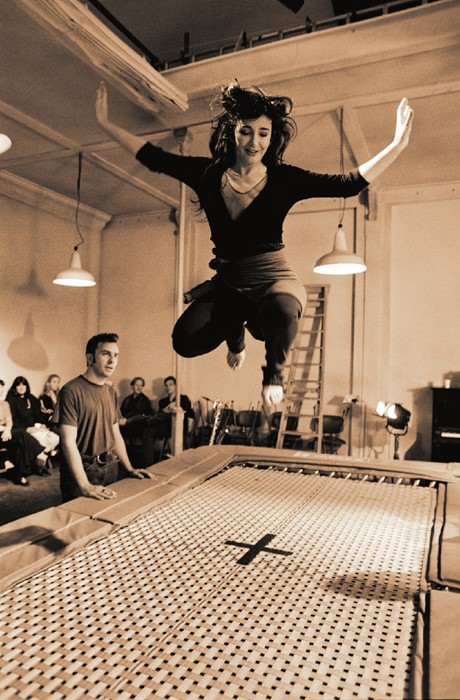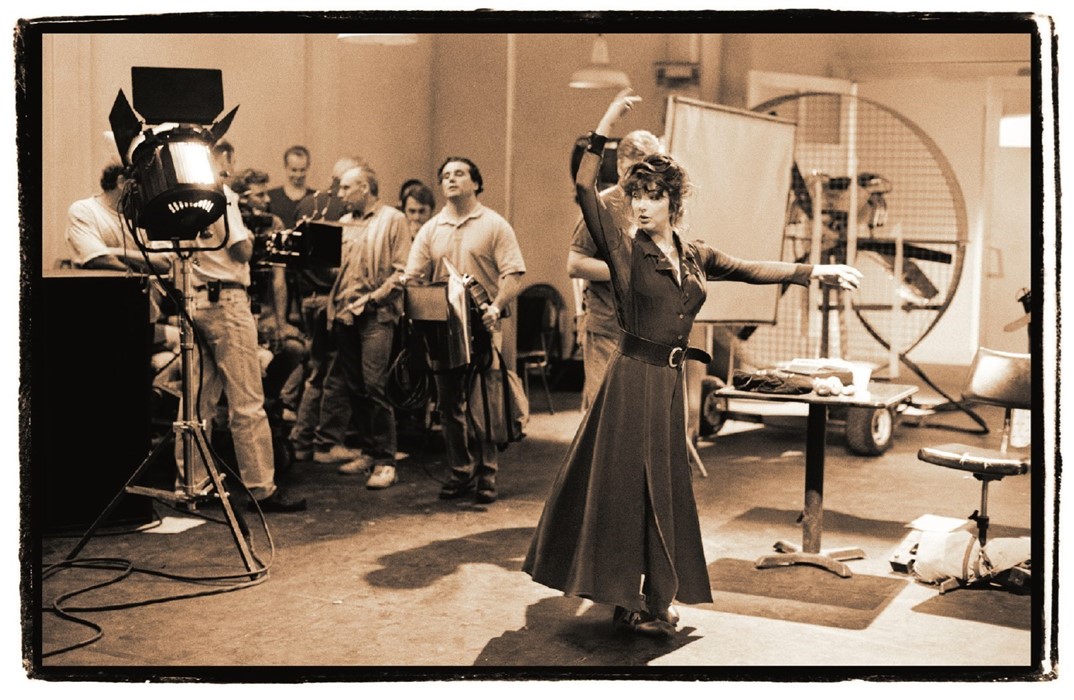Part visual album and part narrative film, Kate Bush’s powerful 1993 work The Cross, The Line and The Curve is now available to watch online
From the very beginning, Kate Bush’s career has been defined by her pioneering synthesis of music and movement. Signed to EMI at just 16, she spent two years honing her craft by enrolling in dance and mime lessons with Bowie collaborator Lindsay Kemp before releasing any music at all; on her first (and only) tour she instructed her sound technicians to develop the first ever microphone headset so she could dance and sing simultaneously, changing the possibilities of live concert performance forever.
With the sensual shiver and outstretched arms of Wuthering Heights and the elegant, expressive pas de deux of Running up that Hill, Bush’s music videos also introduced a wider public to contemporary dance. In the case of the latter video, the choreography was considered so radical that MTV were unwilling to screen it and chose to air a live performance of the song instead.
It seems strange then that only her most devoted fans are aware of Bush’s brief foray into filmmaking, given its heavy focus on her personal relationship with performing. The Cross, The Line and The Curve is a strange beast — part visual album, part extended music video, part narrative film — and even more interesting for Bush’s willingness to use dance as a device to explore the darker recesses of her own psyche.
The Cross was produced in support of 1993 LP The Red Shoes to little fanfare: Bush herself lamented the rushed production schedule and limited budget, later hilariously deeming the film “a load of bollocks”. Partly due to her implicit disowning of the project and the 13-year career hiatus she took immediately after its release, the film sunk into obscurity, becoming a collector’s item for only the most devoted acolyte. Rare copies of the original VHS still fetch hundreds of dollars on fan forums and resale sites.
Now uploaded to YouTube, everyone can experience this delightfully bizarre trip through Bush’s singular imagination. Beginning in a rehearsal studio, she dances in a straitjacket and plays with a yo-yo to Rubberband Girl, before a power cut leads to a meeting with Miranda Richardson in ballerina drag, gifting her a pair of cursed dancing shoes. A fantasy sequence follows that includes Lindsay Kemp dancing on skulls to an Irish jig, Bush rolling around in fire as her legs flail wildly independent of her body, a procession through a snowstorm flanked by angels, and a Caribbean bacchanal in which she stamps across a cornucopia of fruit.

Despite these otherworldly settings, the project was deeply personal, possibly explaining Bush’s disappointment with the end product. Aiming to invoke the masterful synthesis of storytelling and choreography in Powell & Pressburger’s 1948 The Red Shoes, the film has been read as a direct tribute to the visionary filmmaker Michael Powell himself, who died a few years before just as he and Bush were planning a collaboration.
It’s also a remarkable testament to the power of dance to explore our most primordial frustrations: sex, death, desire, and most movingly here, Bush’s grief. Only two years before, her mother Hannah had passed away suddenly, and along with the recent death of her guitarist and a romantic break-up with a close collaborator, she used both album and film as a means of processing these losses — most movingly in the sequence that accompanies Lily, as Bush rests her head in the lap of a kindly looking old woman.
When discussing the Running up that Hill video, Bush noted that she saw other musicians using movement “quite trivially… haphazard images, busy, without really the serious expression, and wonderful expression, that dance can give”, countering this by dressing herself and fellow dancer Michael Harvieu in simple grey Japanese hakamas, the camera quietly following them around a spartan room lit only by moonlight.
So too in The Cross the most powerful sequence is the most simple: Bush pirouetting slowly as if flying through outer space, singing album highlight Moments of Pleasure directly to camera with a sheet of silk billowing behind her. While her lyrics are known for their esoteric references, here the song itself is an uncharacteristically straightforward exploration of heartache and bereavement: “Just being alive / It can really hurt / And these moments given / Are a gift from time”. Whirling gently, she begins to smile, as if the sheer joy of moving her body is giving her the impetus to carry on. Despite its flaws, Bush’s belief in the therapeutic power of dance gives the film a memorable resonance, and it’s worth watching merely as a rare insight into the interior life of a fiercely private icon.
Photography by Guido Harari, from limited-edition book The Kate Inside.
